Home-my-Home |
- Можете вы DIY оросительная система?
- Тип Wabi Sabi дома Texan Хьюстон!
- Домашняя установка Siding: Она совсем о факторе твёрдости и вау
- Строить резцовую коробка: Верхние инструменты вам себя нужно сделать его
- Landscaping улучшения на недорогом или никакой цене
| Можете вы DIY оросительная система? Posted: 02 Jun 2011 04:45 AM PDT По мере того как температуры нагрюют вверх, теперь совершенное время думать о поливе вашего ярда. Если вы уже не имеете систему опылительного орошения, то вы можете хотеть рассматривать одно, специально если вы планируете на перемещать. Путем иметь автоматический источник, вы можете помочь сохранить жизнь ваших заводов и landscaping пока вы отсутствующие. Но как раз как DIY-содружественн полив? Если вы хотите полное, то система опылительного орошения в-земли, самое лучшее вызвать в профессионалах. Вы можете обстреливать вне немного больше дег, но стоящее облечение для того чтобы знать что система правильно установлена и соотвествует вашим спецификациям. Как только вы имеете что установленная система опылительного орошения, однако, вы может форсировать свою силу путем создавать вашу собственную оросительную систему потека, которая включает установить трубопровод вокруг ваших заводов, прикрепить тот трубопровод к разъему и излучателю и после этого прикрепить трубопровод к линии вашей системы опылительного орошения. Полив потека похвален как была очень более эффективной и более эффективной системой водообеспечения которая drastically исключает расточительствованную вод воду, и специально идеально если вы живете в области прональной к засухам. |
| Тип Wabi Sabi дома Texan Хьюстон! Posted: 02 Jun 2011 02:27 AM PDT Wabi Sabi is interpreted in lots of different ways and has evolved over the years. Ancient Japanese culture used to associate it with desolation, loneliness and sadness, but today it is all bout being at one with imperfections and leading a more modest way of life, connecting with nature and being at peace.
Sabi used to translate to ‘desolate’ but now it’s meaning is about appreciating old things that have progressively aged naturally through time. Wabi Sabi is a way of life that enables you to be at peace just enjoying moments and simple things and accepting things that are not perfect!! This single family Wabi Sabi designed home is in a residential community in Houston Texas. The design merges together beautiful natural elements, carefully chosen Eco friendly materials with a contemporary theme. On entering the interior you embrace peace and tranquility as the open plan layout allows you space and natural light to flow throughout. The sound of birdsong, the warm weather and the natural bamboo trees can be enjoyed from the generous roof decking. Living in Wabi Sabi style means you go with the flow of being and accept and adapt to change and love and respect nature, natural elements and materials. Wabi Sabi is also a way of just being happy with yourself, stripping down to who you really are and appreciating your values, and enjoying what is most important in your life. Wabi Sabi is never assuming or pretentious! Seattle based Olson Kundig Architects created this stunning Wabi Sabi designed home. Since the late 1960′s they have been recognized and commended for their architectural talents of exploring between residential buildings and nature. Here they used their experience of high-end architecture with the challenge of breaking usual rules and being more unconventional with their work! Making mistakes is the fun part of life, and opens up your own creative mind to change, and new ways of interpretation and thinking. Source: olsonkundigarchitects.com
|
| Домашняя установка Siding: Она совсем о факторе твёрдости и вау Posted: 01 Jun 2011 01:10 PM PDT
When you’re scoping out the home siding market, it all comes down to two things: toughness and curb appeal. Plain and simple, your siding is there to protect your home and look good doing it. The type of siding you choose can make or break the impression it leaves with others. But even more importantly, the right kind of siding lasts for decades with minimal maintenance and lowers your energy costs due to tighter insulation. You may even be eligible for tax credits when you add energy-efficient insulation during the process. To check siding prices in your area, click here. Below I’ll cover the basics for uber-sleek, durable home siding. If you want to learn how to boost your home’s value, protect it for years to come and lower your energy costs at the same time, keep reading. How Strong is Strong Enough?Which type of siding stands up best to your area's climate? First, take a look at your neighbors’ siding materials. Yours should keep in line for the most part with surrounding homes, though that doesn’t mean you can’t add uniqueness with texture, color selection and eye-catching trim. Next, assess your siding needs based on the local climate. Is your area prone to storms, hurricanes and severe weather, or is it mild and temperate? Tough Climate SidingFor tough climates, you’ll need siding that adequately defends the structure of your home and repels moisture, snow, hail and high winds. For that, brick siding, stone siding, and seamless steel could be your best bets. Some products may be on the higher-end scale, with brick costing about $6-$12 per square foot, stone from $15 to $30, and seamless steel at about $7-$8 or more. Compare all siding costs here. James Hardie‘s HardiPlank or HardiBoard lap siding is one of the most popular siding brands in the U.S. for a couple reasons. One, the fiber cement material can last for years if properly installed and maintained. It's also recommended in areas prone to thunderstorms, hurricanes or tornadoes because it withstands windblown debris. And of course, it looks absolutely gorgeous day and night. Mild Climate SidingFor those blessed with a mild climate, less expensive versions are also great fits:
|
| Строить резцовую коробка: Верхние инструменты вам себя нужно сделать его Posted: 01 Jun 2011 12:00 PM PDT
In the movie Gran Torino, Clint Eastwood shows his young neighbor Tao his "toolshed." The kid's flabbergasted at the walls covered in tools of all kinds, and Clint explains he's lived in the same home 50 years, saying, "A man stays in one place long enough, he tends to attract a decent set of tools." He explains that every tool has a job it does better than any other tool can. Young Tao balks at the extent of Clint's investment, and the aging Eastwood states, "Take these three items: Some WD-40, a vise grip, and a roll of duct tape. Any man worth his salt can fix almost any problem with this stuff alone." Clint Eastwood’s tool box
If you're not after doing plumbing and electrical, Eastwood's shortened list doesn't translate to every DIY'er. I may not be Clint Eastwood, but after 12 years in the same spot, I've got a list of tools I couldn't live without, and I'll share the list with you here. A worthy investment: quality countsWhen building a tool box, don't run out buying things all willy-nilly. Either buy things you know will be handy down the line when they're on sale, or that you need as tasks demand, and invest with every purchase, so you're buying a well-made product. Tools are meant to be used with a lot of torque, banging, and aggression, and if you're cheaping out, you'll regret when your tools fall apart midway through a project. Not "if"– "when." Keeping in mind BuildDirect's love of all this DIY, my list of tools is for those who are craft-minded, and may want to do upholstery or other kinds of decor projects over the long-term. There’s Clint, and then there’s the mere mortal. Here’s what us humans need: The do-it-yourself starter tool boxTool box You'd think "obviously," but even I've been guilty of not having a great toolbox for years. Until they began rusting and looking awful, I thought storing my tools in metal and plastic containers was great. Now I don't want rust, or my tools to be scattered in several spots, so I have a huge classic red metal toolbox. A proper latching toolkit doesn't just keep you sane and organized, it's designed to protect your investment. Get one with compartments and multiple levels. Hammer Get a great grip, and make sure it's nicely balanced. The “weight” of a hammer is a personal preference, most would begin at 16 ounces. Your hammer can last your lifetime if you buy good quality. Invest! I'm not even 40 and mine's 20 years old. If you're planning to do any kind of upholstery or wood-making crafts, a glue gun is a lifesaver, and it's a cheap purchase. For about $10, I picked up mine with glue sticks included, and it’s been used for everything from making a bedroom blackout-blind to decorating Christmas gifts. Level These days, even smart phones, like my iPhone, have a "level" app tool can do the trick, but if serious accuracy matters, a long level makes a big difference — they can be three feet long, ensuring precision. Consider splurging for a laser-level combined with a stud-finder. Hanging pictures will never be the same! Tape measure You need a tape measure. This item? Not negotiable. Get a tape measure. Make sure it has metric and imperial displayed, so you're not accidentally losing accuracy when converting from one measurement to another, which happens a lot. Considering so many rooms are at least 10 feet wide, buy a 12-foot or longer measuring tape, and make sure it has a locking mechanism for when you’re working with it. Screwdrivers There are three main kinds of screwdrivers, but many others exist. You'll be needing at least small/medium/large of the main styles — Phillips, Robertson, and the standard screwdriver heads. I recommend investing in a good multi-screwdriver set. If you can't dole out for a complete set, at least get a good multi-tool that has 9 or more interchangeable heads stored in the handle. Some have telescoping abilities, allowing for tight jobs where you can't reach a screw. NOTE: When it comes to screwdrivers and wrenches, quality metal counts, and that's where your money's going. If you have a particularly tight nut or bolt to attack, and that cheap, convenient tool's metal starts stripping, you'll regret not investing the first time. Do not compromise on this purchase. Stripped screws are no one's idea of a fun day of DIY work. If screw-stripping happens to you, yes, there are tools for removing stripped hardware too. Adjustable wrenches Monkey and crescent wrenches are really good to have. I went a long time without needing them, so how soon you’ll need one depends on what tasks you run into. The above line about "quality metal counts" counts here too. Get an adjustable wrench the size you need today, with a little room up and down. Expand your collection as time requires. Needle-nose pliers Whether it's tightening wires on my balcony, securing my frying pan's handle, or trying to change the lights in my 1952 fixtures, I don't know how I lived without my five-set of pliers for so long. Just your standard pair of needle-nose will do a starting kit, though. If you didn't already know, needle-nose pliers usually have a wire-cutting feature as well. But wait! There’s more!It’s not just tools we need for doing our jobs — other things are necessary too. Here’s what you’ll also find in my tool box, and what’s worth putting in yours: Having a flashlight is often essential to getting a good look at your project. Sometimes, you won't have the time to run for a light stored elsewhere when it's urgent, so I keep a cheap little LED "turtle light" in my kit, just in case. Rags & brushes Another "just in case" item — whether it's springing a leak, spilling some stain, applying caulking, or more, there are instances where having a rag then and there is critical, so I like to be ready when it happens. Sturdy wire There are lots of uses for piano-wire type solutions in gardening, picture hanging, decorating, and other little projects around the house. A couple arms' lengths in the toolkit is just another in-a-jam emergency item for my kit. Clear storage boxes with dividing walls I cannot tell you how much I love having my nails, screws, bolts, and other bitsies divided into compartments in one handy box. Fix-it jobs are much easier (and less risky) when not rummaging through often-sharp, often-rusty hardware for a nail or screw. If you can't find the perfect storage box at a hardware store, check crafting supplies shops and dollar stores too, where these solutions are often cheaper. Wood glue If you've got the vise grips, you're half-way to most minor wood-furniture repairs. A little dab o' wood glue'll do you, if you cinch it in place with Clint’s handy vise. Sandpaper A few sheets of varying grits will make sure you're not skipping a vital step in making your weekend project as pretty as it should be. Get coarse through to extra-fine grit, and every job can be finished to perfection. Quality tools are an investmentAnd there you have it. A tool box packed with all these things will see you through a majority of home projects. If home improvement is a passion of yours, quality tools are an investment that can last a lifetime. Start today! Building a Tool Box: Top Tools You Need to Do It Yourself is a post from: BuildDirect. We cover a variety of home improvement products including laminate flooring, hardwood floors, bamboo flooring, tile, decking and more. We also offer a wide range of info on interior design, housing trends, home how to, green building and living, and more. Related posts: |
| Landscaping улучшения на недорогом или никакой цене Posted: 01 Jun 2011 09:00 AM PDT
One thing is certain; great results at low-cost isn’t a formula likely to go out of style. This is true when it comes to home improvement, inside and out. But, since summer’s coming, let’s talk about the ‘out’; outside in your yard, that is. Home and garden expert Alyssa Davis drops in again here on the BuildDirect blog to talk about how to carve out a little piece of landscaping heaven of your own, while also going easy on your pocketbooks … *** Although you want your yard and the exterior of your home to look attractive for the spring and summer season, sometimes it’s necessary to economize. If you are on a tight landscaping budget this year, it’s ideal to find ways to landscape your property attractively while spending very little money. Fortunately, there are plenty of low-cost or even no-cost methods that you can use to make the exterior of your home and your yard beautiful. Here are a few inexpensive ideas that you can use to immediately spruce up your landscape. Garage Sale FindsNever underestimate the power of a garage sale when looking for inexpensive ways to landscape your home. As the saying goes, one man’s trash is another man’s treasure. You’ll frequently find old flower pots and planters, leftover landscaping supplies such as partially used bags of mulch, and yard decorations at garage sales or flea markets. This can be a great way of getting the items you need at a drastically discounted price. Buy Mulch in BulkIf you have flower gardens or planting areas around your home, chances are you like to keep them mulched. Although mulch can be quite expensive when you buy it in small bags, it’s actually fairly inexpensive when it’s purchased in larger quantities. If you or one of your neighbors has access to a pickup truck, you might want to go together and get a large load of mulch. You could even ask several of your neighbors if they would like to split a truckload of mulch so that everyone can beautify their yard and save money at the same time. Some landscaping supply companies will even deliver a truckload of mulch for a fee. This can be a great way to save a lot of money when landscaping your yard. Also, if you already have mulch in place, take a rake to it before adding new mulch. Mulch compacts over time: Raking it fluffs it up and makes it look like new. If additional mulch is needed to top off the beds, you will only need a fraction of what you would use without raking. Grow Your Own Bedding PlantsIf you plan to grow vegetables, flowers or other decorative plants around your home, you can save a significant amount of money by growing your own plants from seed. Depending on the plant variety, this might mean starting your seeds indoors early in the spring or simply sowing the seeds directly into the garden once the weather has warmed up. As compared to the high cost of buying plants at garden centers and nurseries, this method can save you a lot of money.
|
| You are subscribed to email updates from homerenovation2 To stop receiving these emails, you may unsubscribe now. | Email delivery powered by Google |
| Google Inc., 20 West Kinzie, Chicago IL USA 60610 | |









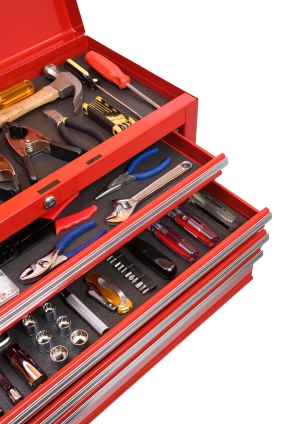
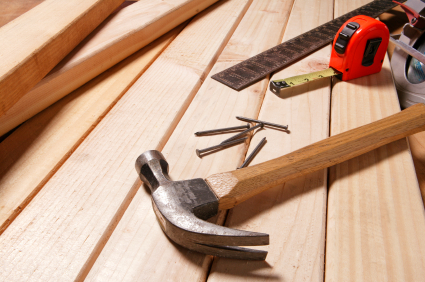
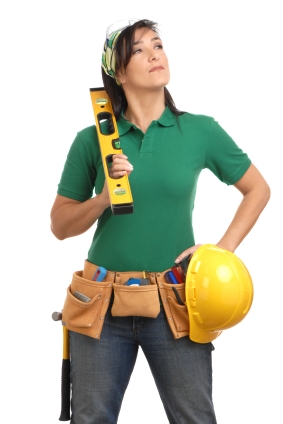
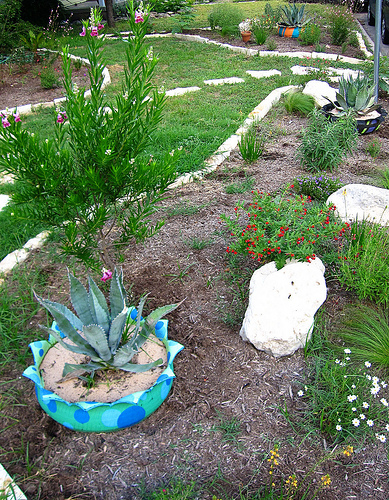
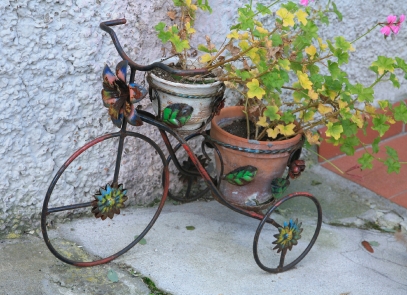
Комментариев нет:
Отправить комментарий